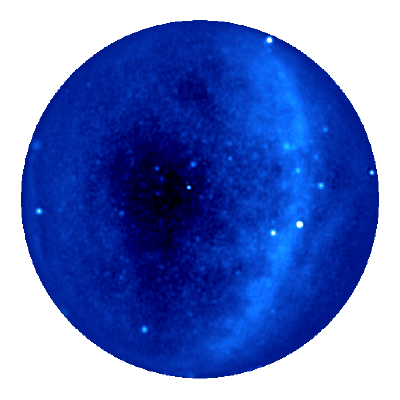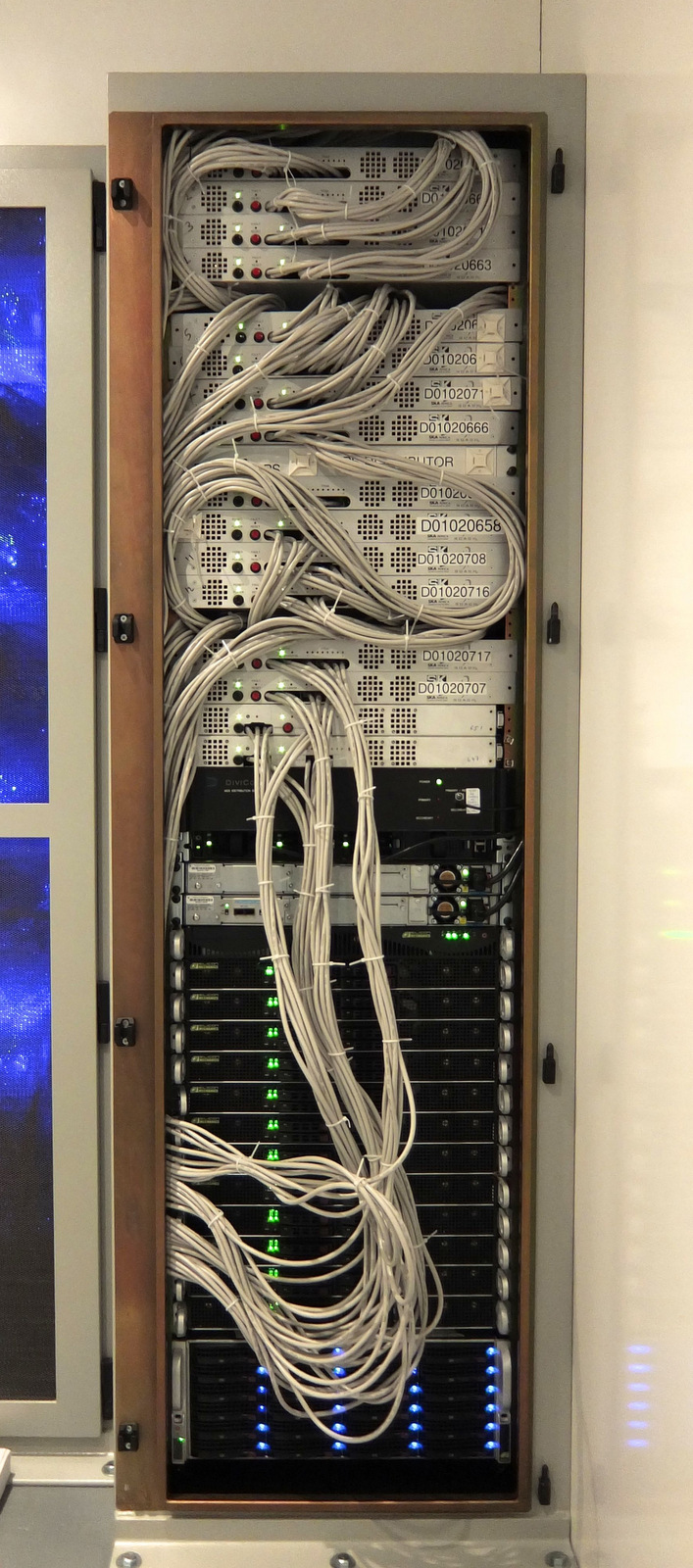 As part of the LEDA project we developed and integrated signal processing instrumentation into the first station of the Long Wavelength Array (LWA1) and provided the signal processing backend for a newly constructed LWA station at Owen’s valley in California. Find out more under host facilities. This comprises large-N correlators serving up to 512 dipole antennas of the LWA-OVRO, and 64 dipole antennas at LWA1, leveraging a packetized CASPER architecture and combining FPGAs and GPUs for the F and X stages. LEDA also developed and fields switching frontend electronics used to accurately calibrate the total sky power signal received from individual dipoles separated from the core arrays at both sites in New Mexico and California.
As part of the LEDA project we developed and integrated signal processing instrumentation into the first station of the Long Wavelength Array (LWA1) and provided the signal processing backend for a newly constructed LWA station at Owen’s valley in California. Find out more under host facilities. This comprises large-N correlators serving up to 512 dipole antennas of the LWA-OVRO, and 64 dipole antennas at LWA1, leveraging a packetized CASPER architecture and combining FPGAs and GPUs for the F and X stages. LEDA also developed and fields switching frontend electronics used to accurately calibrate the total sky power signal received from individual dipoles separated from the core arrays at both sites in New Mexico and California.
Accurate calibration and imaging are crucial requirements for LEDA, necessary to subtract the bright foreground sky and detect the faint neutral Hydrogen signal. This depends in part on the available computing budget. From this standpoint, LEDA is a O(100) TeraFlop per second challenge that leverages scalable architectures looking forward to development of future radio arrays requiring O(10) PetaFlop per second performance. Stage two of the Hydrogen Epoch of Reionization Array (HERA) roadmap(1) is one example.
The LEDA FPGA/GPU Correlator
Radio astronomical imaging arrays comprising large numbers of antennas, O(102–103), have posed a signal processing challenge because of the required O(N2) cross correlation of signals from each antenna and requisite signal routing. This motivated the implementation of a Packetized Correlator architecture that applies Field Programmable Gate Arrays (FPGAs) to the O(N) “F-stage” transforming time domain to frequency domain data, and Graphics Processing Units (GPUs) to the O(N2) “X-stage” performing an outer product among spectra for each antenna. The design is readily scalable to at least O(103) antennas. Correlators of this design are both deployed at the two sites in New Mexico and California. A more detailed description of the implemented correlator architecture can be found in Kocz et al. (2014) and Kocz et al. (2015).
Imaging
Iterative calibration and imaging will rely on warped snapshot imaging and be drawn from a GPU-enabled library (CUWARP) that is designed specifically to support ultra wide-field full polarization imaging with fixed dipole arrays. Calibration techniques will include correction for ionospheric refraction and direction dependent dipole gains, and exploration of pulsar data analysis to improve performance.
Total Power Measurements (LEDA developed switching frontends)
To observe the actual total sky power spectrum, a well calibrated and characterized receive chain is required in order to be able to probe sky power levels in the mK regime in the presence of thousands of K bright foreground emission. This is a challenging problem and LEDA attempts to push the limits by applying specially designed front end electronics to be used together with LWA-type cross-dipoles.
(1) See http://reionization.org/RFI2 HERA.pdf .
